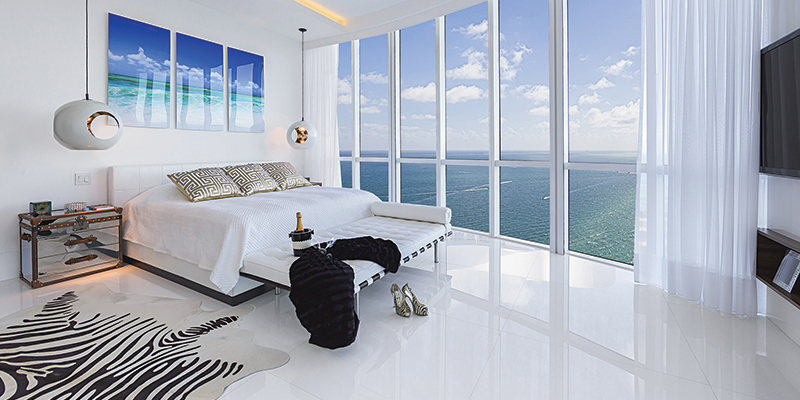Building sites for single-family houses hit a record high last year, even as lots were the smallest ever, according to data from the Census Bureau’s Survey of Construction.
The median lot size sold in 2016 dipped to 8,562 square feet, or just under a fifth of an acre. That’s a small decline from 2015, when the median fell to under 8,600 square feet for the first time.
While lot sizes are shrinking overall, regional differences are major. For example, the median size of a fully developed building site in New England, which is known for strict, low-density zoning rules, is nearly twice as large as the national median – exceeding a third of an acre. The Pacific division, where densities are high and developed land is scarce, has the smallest lots, with half of the lots under 0.15 acres.
The lot size analysis, which was made by economists at the National Association of Home Builders (NAHB), does not include custom homes built on the owner’s land.
Price-wise, half the lots nationwide were priced at or above $45,000, a value first reached in 2015. Before that, the previous record was the $43,000 posted in 2006, in the midst of the housing boom – two years before the market came apart at the seams.
Rising costs are most pronounced in the West South Central and North Central divisions, where lot prices hit a new high. Half the building sites in these regions sold for more than $47,000 last year. In the boom years of the previous decade, the median lot price for these two divisions was under $30,000.
Given that lot sizes continue to shrink and housing production is still significantly below historically normal levels, building sites are still being sold at record-high prices.
Despite the record-high lot prices, they accounted for less than 17 percent of sale prices of new single-family homes started in 2016, which is the lowest share since at least 1999. The declining share suggests that other construction costs, including labor and materials, are outpacing rising lot values.
Meanwhile, despite smaller lots, builders are managing to make their backyards larger, according to research from online real estate brokerage Trulia. The typical house completed so far this year included 7,048 square feet of outdoor space, marking the third year in a row yard sizes have grown. The trend breaks a 25-year run toward smaller outdoor spaces.
Yard sizes are increasing because the footprints of the houses themselves are shrinking, as builders try to cut costs by making their houses smaller. At the same time, buyers are demanding better-designed outdoor spaces.
- ••••
Water is not everyone’s cup of tea. But if it’s a water view you crave, be ready to pay for it. Handily.
According to Miami agent Ross Milroy, who specializes in properties priced at $2 million and above, some condominiums that feature a direct water view sell for as much as twice the price of a comparable unit that looks over the city.
Not surprisingly, the biggest price discrepancy can be found on South Beach, where condos with a direct view of the ocean or bay bring $1,950 per square foot, while the same unit that overlooks the city sells for $970 per square foot – a difference of 101 percent.
Water view premiums can be found throughout Miami at buildings adjacent to the ocean, Biscayne Bay and even the Miami River. At Ten Museum Park, a 50-story condo in downtown Miami, comparable condos are listed for sale at $1.1 million for water view and $759,000 for city view – a 49 percent difference.
Of course, people’s desire to live near the water is nothing new. “Buyers want to see the ocean, hear the water, feel the ocean breeze and have a seamless experience of bringing the outdoors in,” says Milroy.
- ••••
Folks trying to raise their credit scores often resort to tactics that make sense intuitively, but sometimes backfire. For instance: Many think that closing unused cards will help their scores. But it could do the opposite.
The reason is tied to an important metric in credit scoring systems called the debt-to-limit ratio, or “revolving utilization.” This metric compares your existing credit card balances to the combined credit card limits on all of your open cards.
So, if you have $2,000 in balances on your cards compared with $10,000 in the combined limits on your cards, your debt-to-limit ratio is 20 percent because you’re using 20 percent of your aggregate credit limit. Twenty percent is a pretty low ratio – a good thing for your credit score.
Closing one or two unused credit cards would remove some percentage of the “limit” portion of the debt-to-limit ratio measurement. Let’s say the card you closed had a $5,000 credit limit. That would leave a $2,000 balance owed and only $5,000 for your total spending limit, which instantly doubles your debt-to-limit ratio to 40 percent.
Even closing cards that represent a smaller percentage of your total debt limit would drive that ratio higher.
Now apply this knowledge to the holiday shopping season and the bills that follow. Seasonal gift-buying typically brings an increase in outstanding card balances – pushing up the “debt” side of the ratio. Closing one or more unused cards in the wake of that would lower the “limit” side of the ratio at the same time: a one-two punch that could decrease credit scores considerably.
Lew Sichelman has been covering real estate for more than 30 years. He is a regular contributor to numerous shelter magazines and housing and housing-finance industry publications. Readers can contact him at lsichelman@aol.com.

